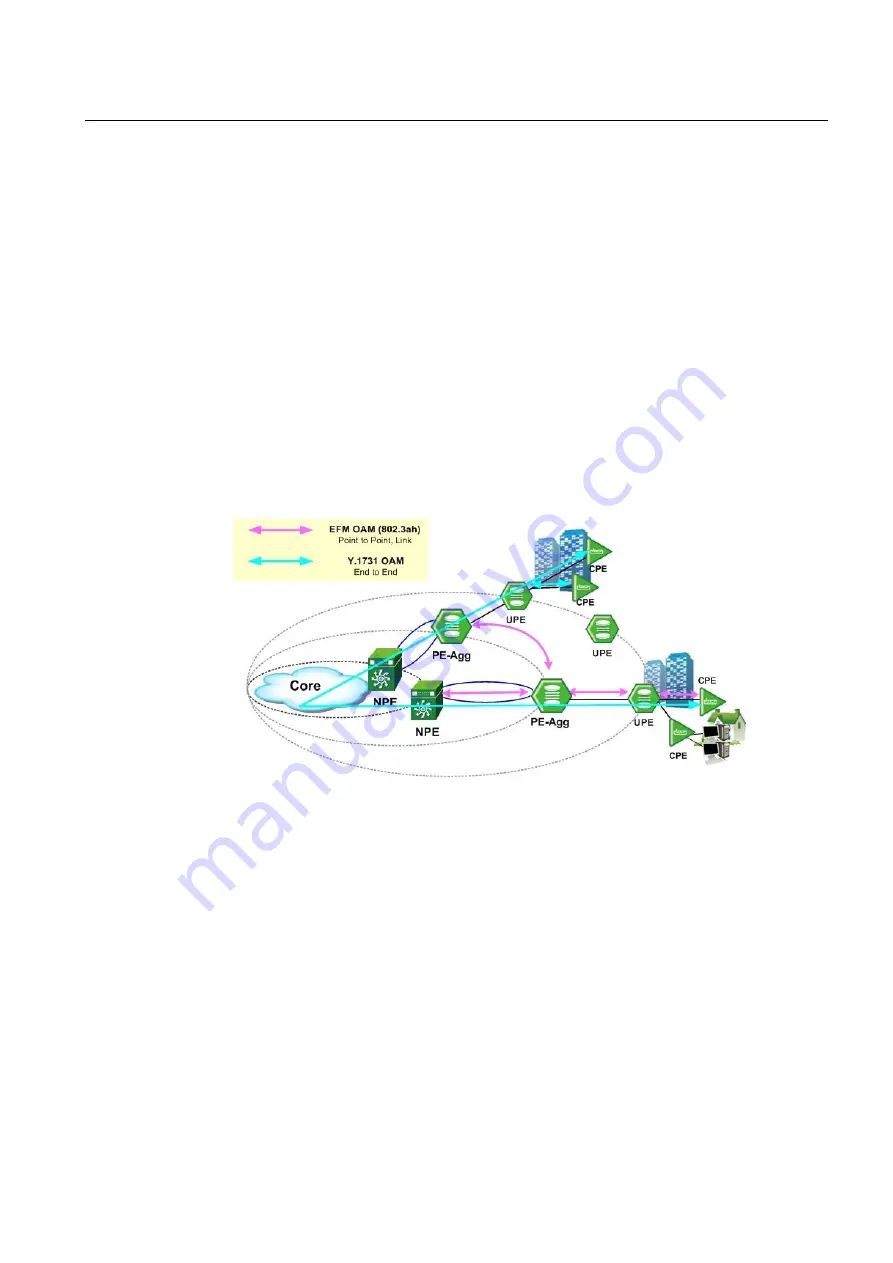
User Manual
UMN:CLI
V8102
179
7.5
Operation, Administration and Maintenance (OAM)
In the enterprise, Ethernet links and networks have been managed via Simple Network
Management Protocol (SNMP). Although SNMP provides a very flexible management so-
lution, it is not always efficient and is sometimes inadequate to the task.
First, using SNMP assumes that the underlying network is operational because SNMP re-
lies on IP connectivity; however, you need management functionality even more when the
underlying network is non-operational. Second, SNMP assumes every device is IP ac-
cessible. This requires provisioning IP on every device and instituting an IP overlay net-
work even if the ultimate end-user service is an Ethernet service. This is impractical in a
carrier environment. For these reasons, carriers look for management capabilities at eve-
ry layer of the network. The Ethernet layer has not traditionally offered inherent manage-
ment capabilities, so the IEEE 802.3ah Ethernet in the First Mile (EFM) task force and
Y.1731 added the Operations, Administration and Maintenance (OAM) capabilities to
Ethernet like interfaces. These management capabilities were introduced to provide some
basic OAM function on Ethernet media. OAM is complementary, not competitive, with
SNMP management in that it provides some basic management functions at Layer 2, ra-
ther than using Layer 3 and above as required by SNMP over an IP infrastructure.
Fig. 7.1
OAM Deployment Scenario
OAM is responsible for monitoring and troubleshooting individual Ethernet links or end-to-
end Ethernet instances.
EFM OAM provides mechanisms for remote fault detection and loopback controls. It pro-
vides single-hop functionality in that it works only between two directly connected Ether-
net stations, called local Data Terminal Equipment (DTE) and a remote DTE. OAMPDUs
are interchanged between local DTE and remote DTE. A local DTE manages a remote
DTE by referring to OAMPDUs containing the information of critical link events or faults
with its remote DTE.
ITU-T Y.1731 OAM is used for the per-customer and per-service granularity required
Maintenance Association End/Intermediate Point (MEP/MIP) on a per-domain, per-VLAN,
or per-port. It is the standard for Layer 2 ping, Layer 2 traceroute, and end-to-end connec-
tivity check of the Ethernet network. ITU-T Y.1731 OAM detects, verifies and isolates
connectivity failures in Bridged VLANs. And Y.1731 provides functions for performance
monitoring and it is focusing on the services aspect of Ethernet.
















































